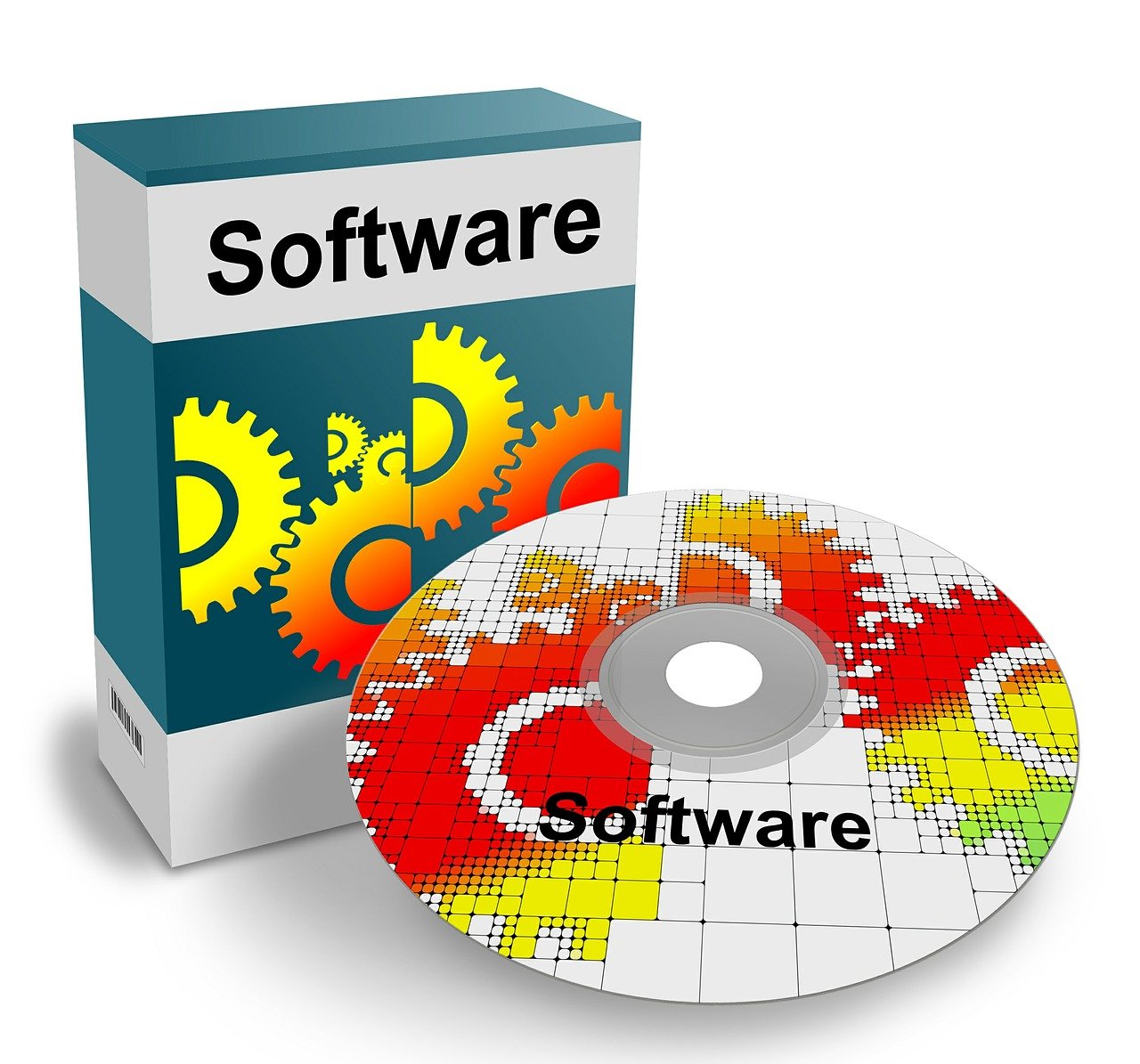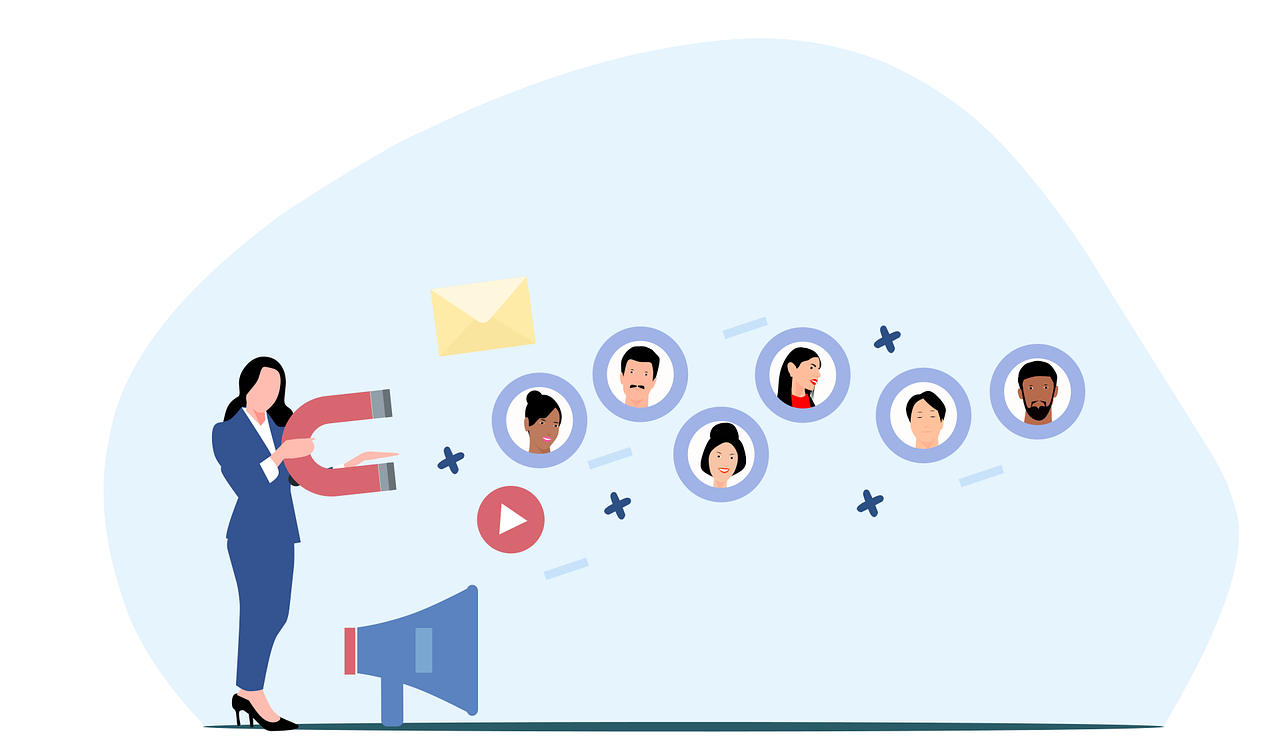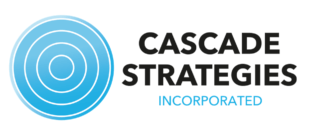26
Mar

Software Marketing Today
If you look all over the Internet, you’ll find a multitude of articles talking about the most effective strategies for marketing your software development company. Ranging from seven to fifteen different strategies, these articles feature proven techniques like email marketing, social media or content marketing, pay-per-click (PPC) advertising or paid ads, and the like. For our part, we boiled it down to five key strategies here.
But with how tough competition is in the software development industry, it won’t be any surprise if the thought of doing more regarding targeting new customers has crossed your mind. Most likely, software companies are using the same marketing strategies you’ll find online, so employing a different tactic would help your company stand out from the rest or dominate a particular niche. But how do you come up with a different game plan when the field of software marketing has apparently been mapped out with all that strategic information available out there?
Most software marketing strategies focus on targeting and resonating with the ideal customer, from identifying the most profit-optimal client to tailoring your messaging to appeal to that buyer persona. They talk about the variety of approaches you can take to capture the attention and engage with your target consumer. But what if aside from thinking about who your ideal customer is, you take your marketing one step further by coming up with the best possible user experience, from the time your target persona first hears about your company to the point that they’re not only your regular customer but also your company’s best advocate?

Copyright Karolina Grabowska
Focusing On the Customer Experience
Now you might be thinking that this either sounds like the same thing or even antithetical to the concept of optimizing your marketing efforts by recognizing your ideal customer. You will still be doing the same things you’ve done in identifying and reaching out to your target client, such as demographics, psychographics, even SEO, but with this approach you are not just looking outwards from the lens of company marketing but rather from the perspective of a customer looking for a solution to their problem.
With that thought, you start off with the question of “exactly what problem was my software meant to solve and how does it solve it?” Are you able to deliver that idea in words that are easily understood by your ideal customer? Are you targeting the end-user or is there a decision-maker involved? If there are other similar companies offering the same product, how do you set yourself apart with what you can do differently from the vantage point of a prospective client? Can you encapsulate all that if all you have is one tagline or even one image to catch consumer attention? If it does catch attention, what would hook your best prospect into learning more about the software? As you can tell, some if not most of these questions also serve as a good foundation for the branding of your software product.

Copyright Fauxels (Pexels)
Local Presence Focus
You can also consider looking locally to see if the solution your software is offering is relevant to your community. If everything falls into place, not only will you enjoy the benefit of a consumer base right at home but more often than not, local communities have proven to strongly appreciate and support homegrown talent. This in turn could lead to an optimized and visible Google Business profile in search results and Google Maps. Just imagine how a local consumer feels discovering that a company offering a solution to their problem is found right in their own neighborhood.
Digital marketing is all the rage nowadays but exploring your local market also opens up the opportunity to try traditional marketing such as flyers and mailers. You can also even try hosting events or partnering with local companies, which would be a good way to practice and gain experience especially if you have plans to expand further not long after and would consider similar marketing activities and collaborations like influencer marketing and guest blogging.
Focusing locally is also a good place to start with SEO. Backed by keyword tools and planners to generate long-tail keywords, approaching SEO with the mindset of a local consumer with a specific objective in mind allows you to experiment more efficiently with a narrowed set of key phrases compared to what you had to work with had you jumped into a larger market base. Once you figure out the keywords that work best from your localized set, you can then riff off from these examples as you start expanding beyond your community.

Copyright MR-PANDA
Website Optimization and Multimedia Content
You can then optimize your website and its content with those keywords. Design your website with the added perspective of a customer visiting for the first time: navigating it should be intuitive with an engaging interface and interesting content. Make sure it’s mobile-friendly as well. If you don’t know it yet, search engines favor fast loading websites so regularly test your site speed especially whenever you make any changes or updates. Your Google Business profile might capture would-be clients’ attention, but it’s at your website where most of the action should take place, so be sure you have plenty of quality backlinks to it.
Whether your website is found through search results or a backlink, your first-time visitor would be expecting to find content elaborating on why your software is the right product for them. Aside from a blog section and other written elements, make sure to devote some space for informative multimedia materials like video tutorials or walkthroughs. Your written content can have all the information you would like to relay about your software and your company, but your visitor might not have all the time in the world to go through all those. Instead, they might stick around for a short but engaging and entertaining video.
Incorporate short animated infographics or explainers too into your website, thus sharing information about your software and your company. Vary your videos and animated graphics between informative and technical to fun and entertaining. This is also an opportunity to make your software stand out from other similar products or for your branding to express its uniqueness. You may also use the same multimedia content for your video or email marketing so there’s a sense of familiarity when your customer lands on your website for the first time.
Speaking of familiarity, you might also engage with your customer even more by providing free trial/limited time offers and Freemium subscriptions right from your website. These allow your customer to enjoy the basic features of your software and truly get a feel for what your product offers, perhaps leading them to opt for a Premium or higher-tier subscription for additional or complete access. If possible, you can offer a certain feature of your software to be available on your website; for example, a photo editor whose output could be downloadable either in a reduced but acceptable quality or with a watermark.
Making free trial/limited time offers and Freemium subscriptions available on your website also helps better position the pricing information of your software. Sure, you can include a pricing comparison chart between your software and its competitors, but firsthand experience of your product could prove to be the more convincing or deciding factor for your customer. Nevertheless, ensure that you are clear and transparent with the pricing for your software.

Copyright Andrea Piacquadio
Testimonials and Case Studies
A tutorial or explainer video would give your customer the information they need to understand how to use your software, but it might resonate better with them to use a video to tell the story behind the origins of your product. Sure, your technical videos would spell out what problem your software is solving, but they won’t be able to tap into connections of relatability that might be achieved by a video with a compelling story on how you came up with your product. Trust and loyalty can be earned by a product and company that consistently deliver what they promised, but you can add another layer to that connection by becoming relatable and personal to your customer.
That brings us to client testimonials. Depending on their length or how they are delivered, testimonials can be a once-over or your customer will be able to find one or two with similar experiences advocating the effectiveness of your software. Written testimonials are fine and the norm, but you might consider having a few published in video format. Depending on your research, you might even be able to use your video testimonials in your outbound marketing.
And they don’t all have to be too straight or technical; an effervescent and witty one-liner from a supporter that drew a chuckle from you might have the same effect on visitors to your website and lighten things up.
If applicable, case studies can be employed for the combined effect of walkthroughs and testimonials. While it’s usually delivered from the technical perspective of the company, it would pander to a tech-savvy customer who is looking for a more in-depth or niche look at how your software can be applied. Bonus points too if the client using the software in the case study is well-known and well-respected. But don’t let all that technical stuff limit you to jargon and technobabble; consider using language that’s less robotic or monotone and more conversational and organic, taking the opportunity whenever possible to explain or simplify certain techspeak terms or to translate highly specialized situations into simple, relatable language.
Client success stories can also function as a case study or be as concise as a testimonial. In addition, you can also utilize or embed webinar recordings in your website. The goal of these elements in your website is to demonstrate to your would-be customers that their trust and confidence would be well-placed in both your software and your company.

Copyright Fauxels (Pexels)
Online and Offline Community Marketing
Don’t just limit that trust and confidence to the confines of your website, but expand it to the greater community out there. You’ve developed your blogs, guides/tutorials, multimedia, case studies and other materials on your website with the mindset of not only being informative and instructional, but also engaging at the same time, so the same content should work just as well on social media and the like.
Yes, you are promoting your software and company on social media but instead of being overly promotional, provide value to your target audience by directing your content toward addressing common pain points and questions. This way, you establish yourself as a thought leader while connecting with your audience at the same time.
Don’t overload your posts with information, though; you can use the “breadcrumb” approach where you open with a particular pain point and lightly touch on what your software can do to solve it and then add a backlink to your website if they would like to learn more. Aside from sharing a whole video or webinar, you can also lift a particularly interesting section from it to share on social media along with a link where they can watch the full content. Break the monotony every now and then by sharing funny or witty content that’s either relevant to your software or industry as well as a particular occasion or holiday.
Be mindful of the audience and the platform you’re sharing your content with as well; your entertaining and engaging videos would connect well with the Facebook or Twitter crowd, but the more technical stuff such as case studies and webinars might be better received by industry experts, potential professional connections and decision-makers on LinkedIn.
Just as you would engage with your audience, potential and existing customers and their questions and concerns on your social media accounts, you might as well do the same at the forum threads of Quora, Reddit, and other online communities to help build brand awareness and your industry expert reputation.
Knowing or understanding your target audience and the platform would also help lead to tapping into influencer marketing, as you observe the most relevant online personalities drawing the most engagement with likes, reactions, shares, retweets, shoutouts, and more. The same can be applied for other companies you can consider partnering with or guest blogging for, as well as other products you can integrate with, allowing you to connect to new customer bases you wouldn’t have otherwise reached. Of course, you would still need to carefully evaluate the pros and any cons of partnering with a particular influencer, company or product.
In addition to a strong online presence, there’s a larger offline community that you shouldn’t forget to connect with as well. Make your presence felt in the real-world by customers, decision-makers, and other field professionals by attending industry events, hosting live demos, participating in local community events or if possible, sponsorship programs.
And what could also be more real to a would-be customer than someone they know who not only uses your product but has good things to say about it? Most marketing strategies focus on new customer acquisition, but it’s been proven time and time again that it’s much more cost-effective to retain an existing client versus acquiring a new one. A key point to keep in mind is to treat an existing client like a new customer by also extending to them special offers from time to time like free trials, limited time promotions, or exclusive first access to new or upcoming features. This sense of exclusivity can help counter feelings and thoughts that only the new customers are getting the better deals. The current customers have, in fact, rightfully earned the privileges of loyalty. Imagine how much more powerful and transformative it is to have positive word-of-mouth generated by a long-time customer advocating in your behalf, thanks to this sense of exclusivity and belonging they feel.

Copyright geralt (Pixabay)
Like we’ve noted earlier, optimizing the user experience from prospect to advocate based on the perspective of your customer goes hand-in-hand with the conventional software marketing approach of identifying and targeting your ideal consumer. It might be a novel approach to you, or you already have a lot on your plate with the myriad of software marketing strategies available, but you just couldn’t dare leave any stone unturned; worry not, as you can rely on one market research company who has been performing highly innovative and consistent marketing research work for thirty years and counting.
With a variety of services, Cascade Strategies has been conducting, adapting, and innovating market research studies for over three decades for an honor roll of respected clients. In addition to incorporating ground-breaking methodologies, Cascade Strategies also takes full advantage of the high level of professional research experience and imagination our staff brings to the table to uncover breakthroughs leading to the best marketing solutions for your company. Contact Cascade Strategies today to learn how we can help your software development company do a better job of targeting new customers.
Read more
01
Nov
What Is Psychographic Segmentation?
 So you’ve completed your research on the demographics of your online perfume store and you’ve seen that women in their twenties in Seattle were your top buyers. That’s great, you thought as your mind started to work on the outlines of your next campaign targeted towards these women. However, you discovered upon going through the data one more time that your perfumes are just as popular with forty-something-year-old women in Las Vegas. And when you went to double-check again you discovered another group of women around 25 years old being ardent supporters of your perfumes, but this time they’re from New York.
So you’ve completed your research on the demographics of your online perfume store and you’ve seen that women in their twenties in Seattle were your top buyers. That’s great, you thought as your mind started to work on the outlines of your next campaign targeted towards these women. However, you discovered upon going through the data one more time that your perfumes are just as popular with forty-something-year-old women in Las Vegas. And when you went to double-check again you discovered another group of women around 25 years old being ardent supporters of your perfumes, but this time they’re from New York.
Now how do you go about your marketing given that you would need to adjust it to target your top demographic? Sure, you’ve identified your best patrons as women between 20 and 50 years old but aside from the different locations, you’re not quite sure now what else sets them apart, which could poke holes in your messaging and cause it to fail to resonate with a number of them.
This exercise shows you the limitations of demographic-based marketing. Demographics answer the question “Who are your buyers?” but in order for your efforts to become more effective, you need to go deeper by answering “Why are they buying?” And this is where psychographic segmentation comes in.
Psychographic segmentation is the process of grouping consumers according to their motivations, goals, attitudes, opinions, beliefs and other psychological factors. It helps you better understand what drives purchase decisions. Not only does psychographic segmentation allow you diversify your marketing and reach out to different groups of consumers, it also allows you to create or customize products or services to cater to the varying needs of your buyers.

Copyright Elf-Moondance (Pixabay)
Why is Psychographic Segmentation Important in Brand Building?
Going back to the earlier scenario, you decided to reach out to your target demographic through an online survey, explaining it would help you understand them and serve their needs better. Based on the responses you received, you discovered that these women between 20 and 50 years old from different states appreciated the sweet-smelling but unique line of perfumes you’ve been selling at cost-effective pricing with efficient delivery times. Thus, the messaging of your next campaign highlighted the popularity of your sweet-scented perfumes, competitive pricing, and quick delivery. And the next time the opportunity presented itself, you even went as far as offering free delivery for a limited time.
Because you’ve used psychographic segmentation to break your market into different groups, you’ve also become aware of your other customer segments, which opened up marketing strategies you could leverage towards these subsets. Let’s say one of these groups was composed of regular clients who — although they didn’t buy as much as the earlier group we’ve discussed — you discovered frequently bought a certain perfume. Upon further research, surveys, and interviews of some of the members of this segment, you found that you’re the only online perfume shop that carried this fragrance. This then allowed you to branch out with new marketing which put a spotlight on the fact that this hard-to-find scent could only be bought at your online store, tapping into more potential customers falling under this segment. This also opened up more research on what fragrances your competitors didn’t offer but which your brand carried as well as the development of new unique perfumes that one wouldn’t find anywhere else online.
Psychographic segmentation not only gave you an understanding of the “why” behind purchases, it also granted you actionable insights on selling more of your products. With this data-driven approach, your brand is able to create different marketing playbooks for your various customer segments. The buyer’s journey would be different per customer, but in their minds there is only one brand that’s on top when it comes to a selection of unique scents at great prices and fast turnaround time for delivery.

Copyright Mohamed_hassan (Pixabay)
What Are Psychographic Segmentation Variables?
So how do you group your market according to your psychographic segmentation data? While there are several types of psychographic data on which you could base the customer segments you’ll be forming, indeed.com listed the following as the five main psychographic segmentation variables:
1. Personality – This variable refers to the beliefs, motivations, behaviors, and overall outlook of your target audience. You can group your customers based on personality traits like creativity, sociability, optimism, empathy, etc.
2. Lifestyle – This variable focuses on the daily habits and preferences of a customer, including how they spend their time and things they consider important.
3. Social class – This variable assumes preferences based on income level and spending power. It can also influence how a product is priced or whether it should be marketed as a luxury.
4. Attitudes – This variable considers the behavior of a customer based on their background and values. An example would be an animal lover who leans towards perfume brands that are known to be cruelty-free, meaning they don’t test their products on animals.
5. AIO (Activities, Interests and Opinions) – This variable groups consumers based on what they similarly enjoy or are passionate about. The second scenario earlier where you discovered the subset of regular customers purchasing the hard-to-find fragrance is an example of this variable.

Copyright geralt (Pixabay)
Personas vs. Psychographic Segmentation
While it might be easy to confuse psychographic segmentation with personas, these two concepts are subtly different. Psychographic segmentation groups your markets according to similar psychological traits and can therefore present a whole-market picture of consumers, spanning the range from those who passionately love your market offering to those who dislike it or resist it. This whole-market look also gives you the ability to attach real numbers to the data, enabling you to do things like demand forecasting, market sizing, receptivity studies based on counts of prospects, and the like.
Personas, on the other hand, are profiles — portraits of individual persons. They are more specific, detailed, and focused. Think of a police profile of a crime suspect (just the format of it, not the content.) A well-drawn persona presents a fictionalized representation of your ideal buyer, with information about key traits of that person. You might describe these traits by saying something like “likes to splurge on expensive vacations,” or “typically employed in middle-echelon white-collar jobs like administrative staff, etc.” The persona provides a vivid description of that individual, so you can better understand how to appeal to that kind of person with marketing campaigns and other forms of brand outreach. A good persona description humanizes the data and gives it a relatable face.
Please click here to find out more about segmentation studies, including some interesting case histories. Cascade Strategies has for over three decades been assisting top US and international companies with high quality market research and superior thinking in identifying and focusing on their most profit-optimal consumers. If you would like to find out more, or learn how Cascade Strategies can help provide brand development research for your specific marketing needs, feel free contact us here.
Read more

![]() So you’ve completed your research on the demographics of your online perfume store and you’ve seen that women in their twenties in Seattle were your top buyers. That’s great, you thought as your mind started to work on the outlines of your next campaign targeted towards these women. However, you discovered upon going through the data one more time that your perfumes are just as popular with forty-something-year-old women in Las Vegas. And when you went to double-check again you discovered another group of women around 25 years old being ardent supporters of your perfumes, but this time they’re from New York.
So you’ve completed your research on the demographics of your online perfume store and you’ve seen that women in their twenties in Seattle were your top buyers. That’s great, you thought as your mind started to work on the outlines of your next campaign targeted towards these women. However, you discovered upon going through the data one more time that your perfumes are just as popular with forty-something-year-old women in Las Vegas. And when you went to double-check again you discovered another group of women around 25 years old being ardent supporters of your perfumes, but this time they’re from New York.

















